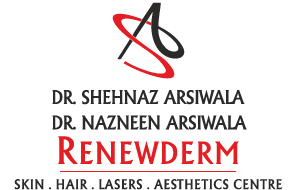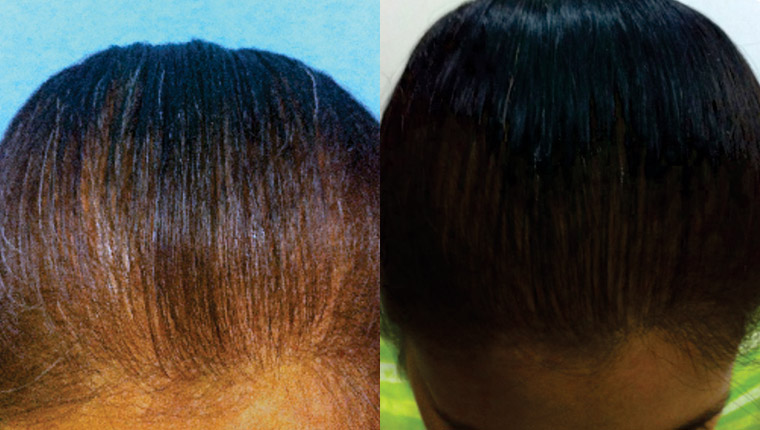Trichoscopy
The truly accurate tool for measuring the progress and effectiveness of hair loss treatment available at Prince Aly Khan Hospital / Saifee Hospital
Until recently, it has been nearly impossible to accurately measure the changes in a patient’s hair loss over time. To know if things are getting worse, or slightly better, the methods available today to give you an answer to these queries are shoddy at best. Thus, accuracy in monitoring hair growth is of the utmost importance.
Alopecia and thinning hair is a common ailment people face; there is typically a well known pattern for hair loss which can help a qualified person to establish that you are indeed losing your hair .But In the very early stages of Alopecia however, the best of qualified person may miss out the subtle signs, and reassure the patient that his hair loss is insignificant resulting in the patient changing many doctors and alternatives for the same.
Many times it is nearly impossible to determine whether a treatment for hair growth is really working by simply examining through a magnifying glass. Even if these patients were being closely monitored by physicians, the comparison between baseline and current status for the hairs that exist would be vague. Why? Quite simply, the tools haven’t existed to perform a perfect analysis. Numerous methods are available to asses the *rate* of hair growth eg Invasive (biopsies), semi-invasive (Trichogram, unit area Trichogram), and non-invasive (global hair counts). . While they may be somewhat accurate, dermatologists and researchers repeatedly find them time consuming, costly, and sometimes very difficult to perform.
In order to reduce anxiety of the patient and Dermatologists, over hair loss and its growth on treatment, a new tool “Trichoscopic – Hair Imaging and Analysis” is now available. This system is initiated in Mumbai by Dr Shehnaz Arsiwala at the Prince Aly Khan Hospital.
Computerized Trichoscopy - A New Technology
Trichoscopy uses something called Epiluminescence Microscopy (ELM), along with automatic digital image analysis for measuring human hair. Simply put, it takes a digital image of a section of the scalp, and not only instantly counts the number of hairs there, but also determines their length, width, and their current state (Growth, Regression, etc.)….this pattern can be evaluated on different area of the scalp or body in the same sitting and compared.
It can be used to understand the rate of hair growth, the size of hair fibers, the frequency of telogen hair follicles, and the quantification of shed hair. Trichoscopy can be used to study effects of various shampoos/hair care products and styling procedures on hair shaft/weathering effects
Evaluation of related scalp conditions and surface skin problems like dandruff, psoriasis, fungal and bacterial infections can be clearly magnified During evaluation the patient sees “live” exactly what the doctor sees on the computer, this enables the patient to understand his hair loss and growth status which is a visual way of patient education too.
On a typical human scalp, approximately 18% of the follicles are in the Telogen (shedding) phase at any one time, Those with conditions such as Telogen Effluvium and Androgenetic Alopecia (Male/female Pattern Baldness),hormonal imbalances, medications, stress have a much higher number of telogen hairs on their scalp.
Knowing the exact ratio of anagen to telogen follicles on a person’s scalp is an effective way to determine whether a person is losing their hair, and exactly how far it has progressed. Likewise, being able to accurately detect a decrease in telogen follicles during treatment for hair loss can reveal how successful that treatment truly is. Conventional trichogram’s can perform this function but it is cumbersome and may have observer variation.
Trichovideoscopy can be viewed as a modification of the classic Trichogram and enables analysis of anagen to telogen ratio. Hair plucked from the observed area is placed on a mobile plate. Using the video camera, these hairs are examined then classified according to their evolutionary stage (anagen, telogen etc). The software automatically counts the anagen/telogen ratio.
The photo trichogram is a scientific control of the hair growth cycle. A small area of the scalp is shaved (1/2 of a square centimeter) and the user takes a picture of the sample with the video camera. Three days later another photo is taken of the sample area. When the two images are superimposed, the user obtains the anagen/telogen ratio. Hairs which have grown are in the anagen stage whereas those which have not grown are in the telogen stage.
Before and after photos of a person on any given treatment regimen allows a detailed conclusion to be made regarding the success or failure of that hair loss treatment.
The advantages of the Trichoscopy lie in its simple, fast, and digital photographic processing, as well as documentation of the procedure and the results of treatment.
With large number of nonqualified personnel, beauticians, hair oil /shampoo manufacturers and even phenomenal household remedies claiming to stop hair loss and regrow new ones, a dermatologist armed with a trichoscopic computerized hair imaging and analysis method is a sure scientific way of documenting the efficacy of the treatment that is given and this can add insight into the research of various treatments for growing hair where millions of dollars are pumped in.

